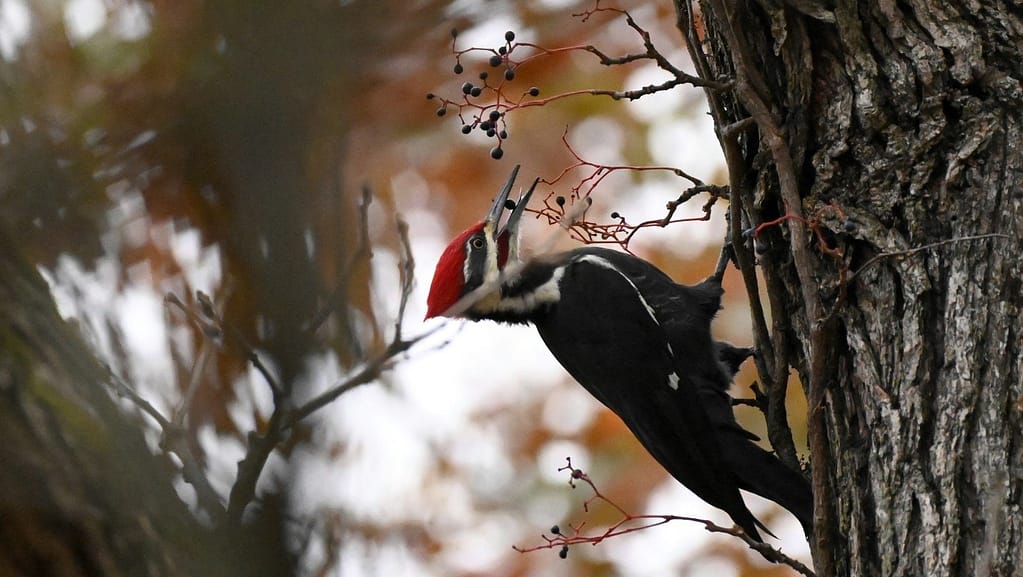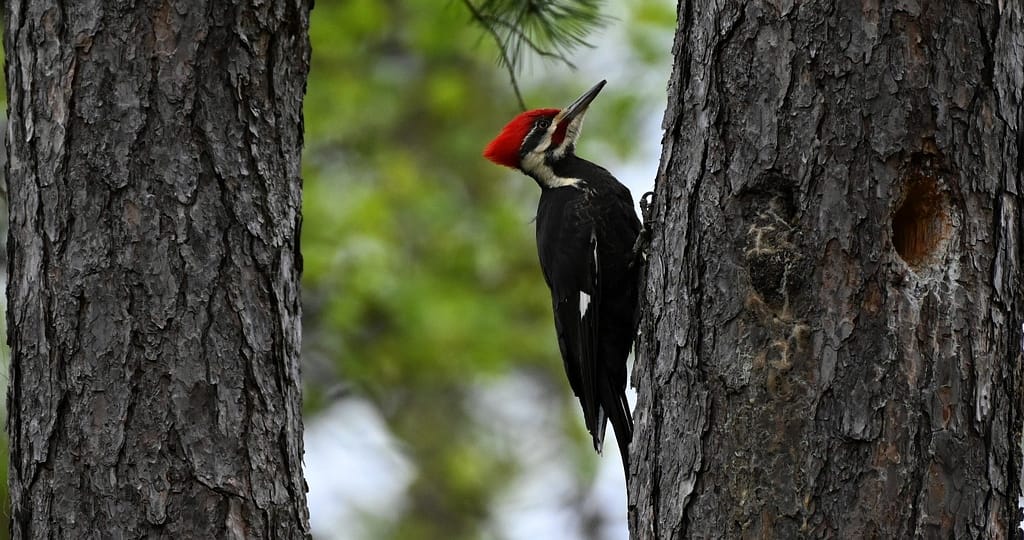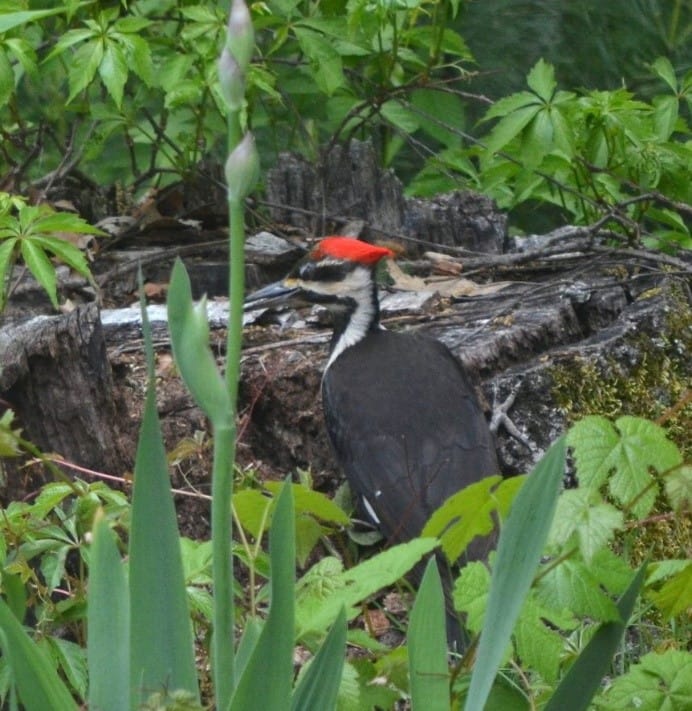by George Jacobi

Motion catches my eye and I look up from the desk. A Pileated Woodpecker has landed in the ragged cherry tree just outside my window and almost immediately begins pounding on a spot at the fork of two major branches. Through the window the thunk is muffled but unmistakable. Usually if I venture out and listen, I will hear (or see) one every few days, but never this close. Why, here’s a blog to write.
The cherry tree, here when we moved in, must be forty years old and looks it. Have you seen the forlorn Ashford Oak now? Good comparison. I used to try to prune it; now the suckers constitute more than half the foliage, but they still produce blossoms every spring. Cherries? Not a chance. The cedar waxwing cartel always hijacks it on their northern migration and cleans those hard bright little cherries out in a day. Their timing is impeccable. This is also wonderful viewing. Squirrels come through to mop up any oversights.

I look away from the screen, rest on my elbows, and watch. It’s a male, with the extra red slash on his cheek. Every five or six whacks, the bird stops to look in his hole and listen. Left head-tilt and peer. Bang bang bang. Right tilt, squint. Bang bang bang. It appears the hunt is mostly visual once he’s zeroed in on the poor insect aurally. He can turn his head almost upside down and does so often. Chips fly. The mining goes on for quite a while, enough for me to wonder how it could possibly be worthwhile for a surely insignificant protein morsel. It looks like a lot of work but cannot be so if the bird is to thrive.
Pileated Woodpeckers need a sizeable territory of older-growth woods and greatly benefitted from the reforesting of the 20th century. I suspect since the spongy moths went through 5 years ago, only carpenter ants and woodpeckers approve of our now abundant dying oaks. Some possible good news: it’s been suggested that emerald ash borers are becoming another favorite meal. Ants and insects are not all the flashy woodpeckers will eat. There is a wild black cherry tree on the edge of my yard which supplies the locals with a few days of fruit in the fall, another time I easily notice them nearby.


https://www.youtube.com/watch?v=NqPPioNKIfo If you want to see one, use your ears first. Drumming is a separate activity from hunting/feeding behavior and is an even more recognizable sound–it consists of more than a dozen beats per second! The bird you hear is not in a desperate hurry to excavate an ant; woodpecker drumming is territorial and is often accompanied by calling. As the call is usually from high in a tree, I liken it to a monkey laughing maniacally…some might say they hear Glenn Close as the wicked Cruella DeVil: https://www.youtube.com/watch?v=ec4nMM9KSKA
And there he goes, off to look for another tasty arthropod. The Pileated Woodpecker is a magnificent bird, deserving of capitalization. Seeing one always elicits a burst of enthusiasm for my home woodlands. Makes you imagine how remarkable a sight the Ivory-billed must have been. None of the common woodpeckers in southern New England (hairy, downy, red-bellied, pileated, flicker, sapsucker, and the rarer red-headed) are in danger of extinction, and are a colorful, cheerful crew in winter. Suet will please the other species, but there is little you can do to encourage the Pileated Woodpecker to visit–except if, like me, you let your landscape gently fall apart.
Photo credits: 1 & 2: Geoffrey Winningham, 3: Elaine Wilmes-Pandolfo, 4: Pat Miller
Thanks for this George. I enjoyed it very much. Don’t get to see enough of these beauties. There is a great pictorial on InstaGram @harrycollinsphotography of the Monkeys 😁
A great read, George! I have to admit I never knew who was making that “monkey call” before this edition! It always bothered me that I didn’t know. It sounds so very tropical!